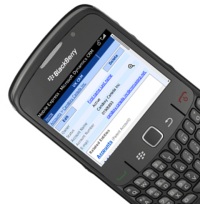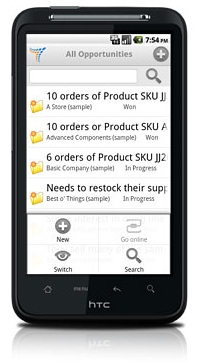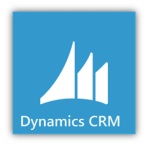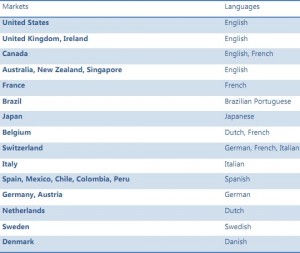Related sites:
Newsletter: Perspectives on Power Platform
Company: Niiranen Advisory Oy
This is my first post on news and gossip that the eXtreme CRM 2012 Berlin conference brought to us. As there’s so many posts out there already that review the contents of the Q2 2012 Service Update (aka Dynamics CRM R8), I’m going to try and reflect on the topics based on my own observations and questions that these latest announcements have brought up. The first stop is mobile CRM.
 Every consultant knows that Microsoft’s initial offering, the Dynamics CRM Mobile Express client, wasn’t really something you wanted to draw the customers’ attention to. It was just barely good enough to tick the feature box of “yes, we have mobile CRM”. On a non-touch smartphone like the popular business products from Nokia or RIM the user experience might have matched the native apps and device capabilities, but in the age of the iPhone this wasn’t at all what the users had come to expect from their mobile apps.
Every consultant knows that Microsoft’s initial offering, the Dynamics CRM Mobile Express client, wasn’t really something you wanted to draw the customers’ attention to. It was just barely good enough to tick the feature box of “yes, we have mobile CRM”. On a non-touch smartphone like the popular business products from Nokia or RIM the user experience might have matched the native apps and device capabilities, but in the age of the iPhone this wasn’t at all what the users had come to expect from their mobile apps.
When Microsoft released the new Windows Phone 7 client application in CRM R7 release (2011 Q4 Service Update), we saw a glimpse of a brighter mobile future, but there was still hardly reason for true celebration. Ok, so we had a mobile optimized client now available, but it had it’s issues:
 The path towards a credible mobile offering would have been quite long for Microsoft to walk all on its own. Therefore it wasn’t really a surprise that they chose to team up with an existing partner and rebrand their mobile applications and services to the new “CRM Anywhere” solution (which is still officially called Microsoft Dynamics CRM Mobile). Out of all the possible mobile CRM ISV’s out there, their partner of choice turned out to be CWR Mobility.
The path towards a credible mobile offering would have been quite long for Microsoft to walk all on its own. Therefore it wasn’t really a surprise that they chose to team up with an existing partner and rebrand their mobile applications and services to the new “CRM Anywhere” solution (which is still officially called Microsoft Dynamics CRM Mobile). Out of all the possible mobile CRM ISV’s out there, their partner of choice turned out to be CWR Mobility.
This could of course be seen as a big blow to the other Dynamics CRM mobile ISV’s, who now have to compete against Microsoft’s own offering. However, in the long term this may actually be a positive turn of events for the whole ecosystem. The fact that there will be an official mobile app available from Microsoft to all the major smartphone platforms will surely drive up customer awareness as well as interest towards the possible use cases for “CRM on the road”.
Considering how much talk there’s been around the mobile use of CRM applications in the past few years, in my opinion we haven’t yet seen it really bloom the way many of us would have expected it to. I think one of the reasons is that mobile CRM has often been considered mainly as “CRM lite” that offers a subset of the features the full application delivers, for those awkward moments when your “CRM full” is not available to you. If mobile CRM is an optional feature that does not tie into the processes you absolutely need to execute, how likely is it that companies will choose to invest in such an additional cost factor? Ben Mitchell from TenDigits said it really well in his presentation:
“You’ve got a perfectly working address book on your phone already. If that’s all you’re trying to replace with mobile CRM, it’s always going to be too expensive. Always attach the price of a mobile CRM solution to the business value the customer is trying to achieve by deploying the solution. Mobile functionality pricing must be delivered in the context of business objectives, not just as a last minute addition to the quotation.”
Mobile CRM is like Social CRM in this sense: companies know why they need to embrace it sooner or later, but they’re still having difficulties in articulating exactly how they plan to go about it. As the limitations of available software are quickly fading away, the focus on real life use cases must rise on top. No, mobile CRM isn’t just about replicating the desktop experience on a smaller device. It must support the mode of working in infrequent bursts and dealing with specific scenarios, such as order entry or survey answer recording while the user is at the customer’s site. The UI needs to be optimized for the process in question, not just equipped with big icons to be poked with your fingers. Whether it’s going to be packaged apps like the Microsoft Dynamics CRM Mobile growing beyond their current feature sets in customizability, platforms like the Resco Mobile CRM Studio gaining popularity as the basis for mobile app development, or even a future release of a HTML5 compliant version of the core Dynamics CRM browser app stealing the show with responsive web design, the playing field for a true CRM Anywhere solution that takes the “mobile first” thinking into everyday practice still looks wide open to me.
 One interesting thing to keep an eye on is what’s going to happen to the Microsoft developed Windows Phone 7 CRM client. The R8 release preview guide states that there will not yet be offline functionality available for Windows Phone devices when the new service launches. This means that Microsoft Dynamics CRM will initially work better on pretty much any other mobile platforms compared to Microsoft Windows Phone 7 (doh!). I’m assuming that the current client version will receive some minor feature updates (new Activity Feeds filters etc.) but a full integration into the CWR Mobile platform will take more time. I’ve noticed in some occasions the WP7 client has actually been referred to as the “Activity Feeds Mobile App”, but I’m not sure if Microsoft could get away with renaming product X to product Y, then launching a new product X and charging extra money for it.
One interesting thing to keep an eye on is what’s going to happen to the Microsoft developed Windows Phone 7 CRM client. The R8 release preview guide states that there will not yet be offline functionality available for Windows Phone devices when the new service launches. This means that Microsoft Dynamics CRM will initially work better on pretty much any other mobile platforms compared to Microsoft Windows Phone 7 (doh!). I’m assuming that the current client version will receive some minor feature updates (new Activity Feeds filters etc.) but a full integration into the CWR Mobile platform will take more time. I’ve noticed in some occasions the WP7 client has actually been referred to as the “Activity Feeds Mobile App”, but I’m not sure if Microsoft could get away with renaming product X to product Y, then launching a new product X and charging extra money for it.
This leads us to the pricing model. Whereas the Windows Phone 7 client is a free download from the Marketplace, the CWR clients are based on a subscription fee. A company who buys licenses for Dynamics CRM, be it on-premises or CRM Online, will not receive any mobile client functionality as a part of the core product. Microsoft Dynamics CRM Mobile will therefore remain as an add-on that customers must purchase licenses for separately. Considering the price is $30 per user per month, compared to the base product price of CRM Online of $44, this means in many cases not all CRM users will be given mobile client licenses. Or perhaps they’ll just be given a midprice Windows Phone device, such as the Nokia Lumia 710, and access to the free WP7 version of Dynamics CRM Mobile. With a number of Dynamics CRM apps already out there in iOS and Android marketplaces that any user can purchase for themselves and point it to a CRM Online or IFD organization, I’m not even sure companies can effectively standardize on a single official mobile app anymore, thanks to the BYOD culture and shadow IT.
 The official Microsoft Dynamics CRM Mobile service won’t be able to match the 40 markets / 41 languages level of the core CRM product, as it will initially be available only in 24 markets and 10 languages. The explanation offered by Microsoft was that there are such regulatory limitations for mobile services in many markets that they simply can’t roll out their mobile CRM offering as quickly as a cloud app like CRM Online. We’ll see how fast they can catch up and bring the service to markets like Finland. It will also be interesting to see whether the initial unavailability will simply mean the lack of local languages or if MS will actually not offer the mobile app for download at all in these tier 2 regions’ marketplaces. I sure hope it won’t be the latter option, even if it would mean I’d have to temporarily return from WP7 to Android for doing proper presales demos of the new mobile service with offline capability. The sacrifices one needs to make for the love of CRM… 😉
The official Microsoft Dynamics CRM Mobile service won’t be able to match the 40 markets / 41 languages level of the core CRM product, as it will initially be available only in 24 markets and 10 languages. The explanation offered by Microsoft was that there are such regulatory limitations for mobile services in many markets that they simply can’t roll out their mobile CRM offering as quickly as a cloud app like CRM Online. We’ll see how fast they can catch up and bring the service to markets like Finland. It will also be interesting to see whether the initial unavailability will simply mean the lack of local languages or if MS will actually not offer the mobile app for download at all in these tier 2 regions’ marketplaces. I sure hope it won’t be the latter option, even if it would mean I’d have to temporarily return from WP7 to Android for doing proper presales demos of the new mobile service with offline capability. The sacrifices one needs to make for the love of CRM… 😉
[…] about what to expect in Dynamics CRM R8 release exactly one year later. As with my previous post on mobile CRM, I won’t rephrase all the content of the official announcement but I’ll rather try and […]
Thanks for the mention Jukka!
[…] can read more of my thoughts on Microsoft Dynamics CRM Mobile on this article I wrote after the announcement at eXtreme CRM 2012 […]
[…] story with responsive design and “write once” business logic is far beyond what the “CRM Anywhere” path announced in February 2012 (and later cancelled) would have allowed to […]
[…] The next planned update, however, was cancelled as the delivery of cross-browser support and the partner provided mobile applications in Q2 2012 proved to be a too ambitious goal. The beginning of the year 2013 did however see the […]
[…] The next planned update, however, was cancelled as the delivery of cross-browser support and the partner provided mobile applications in Q2 2012 proved to be a too ambitious goal. The beginning of the year 2013 did however see the […]